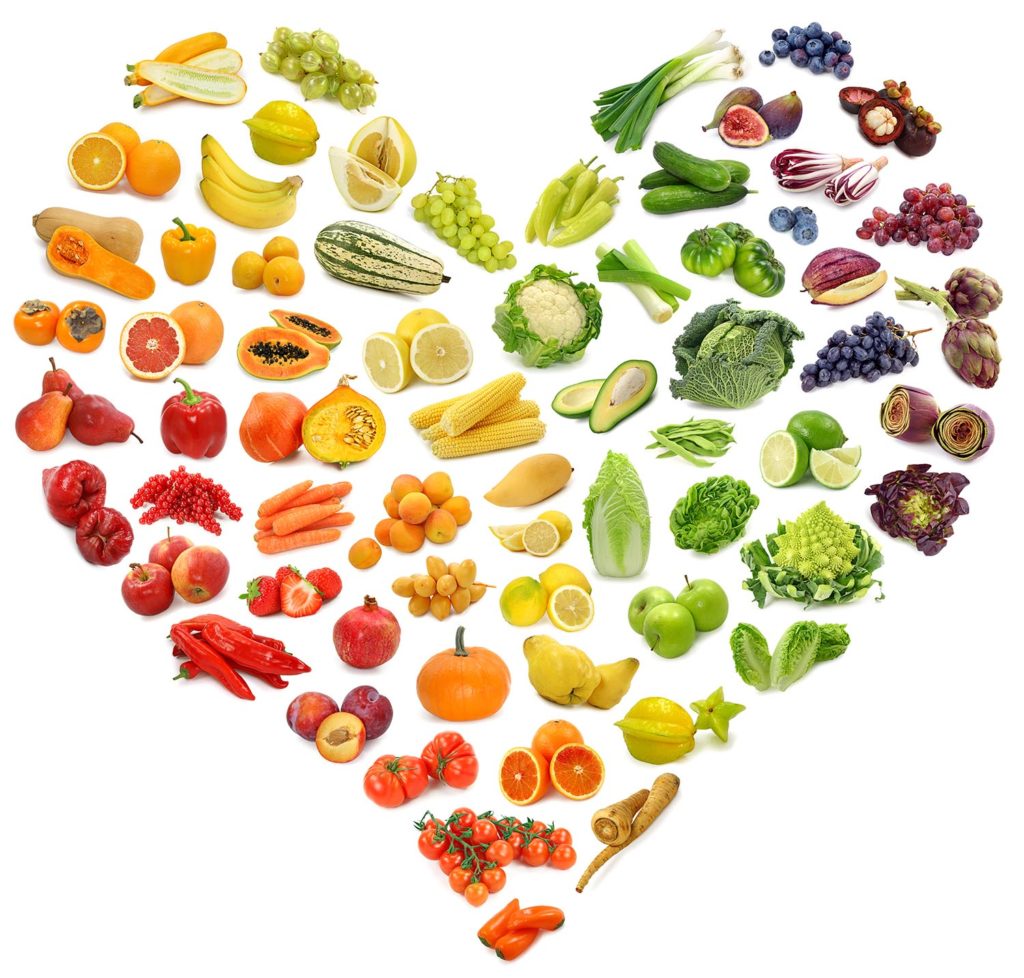4 Easy Tips for Heart Healthy Eating
February is American Heart Health Month, which means heart-healthy eating is all the rage and a major topic of conversation. So, how do you eat for a healthy heart?
Here are some simple ways you can make your every day a little more heart-healthy.
1. Spice it up: Herbs and spices are a great way to flavor your food without extra salt, chemicals and sugars. Instead of reaching for the salt-shaker, reach for herbs and spices (dried and fresh) like pepper, oregano, basil, curry and more. Herbs and spices are also loaded with healthy nutrients:
- Hot peppers are rich in capsacin- a metabolism boosting nutrient
- Oregano is rich in vitamin K- that helps to contribute to the body’s natural ability to form blood clots, and compounds like thymol and rosmarinic acid- both that contain antioxidant properties.
- Basil contains antimicrobial properties and thanks to a compound, eugenol, contains anti-inflammatory properties.
2. Cut back on salt: We Americans eat a lot more salt than we need. Consuming excess salt can contribute to elevated blood pressure and can also contribute to water weight gain. Here are some tips for cutting back on salt.
- When eating out:
- Choose freshly ground pepper over the salt shaker
- Ask for sauces on the side– they can be loaded with salt and calories, so adding your own can help you eat fewer calories and salt
- Ask for grilled instead of sauteed when it comes to meats and even vegetables
- Order mostly vegetables as they have high levels of potassium which can help to counter-balance salt in foods
- When at home:
- Season your food with spices over salt– fill your cabinet with a wide variety of spices, some of my favorite include basil, oregano, curry, and salt-free blends like Mrs. Dash
- Prepare most of your food from fresh ingredients as often as possible- this will limit the amount of salt in your food
3. Load up on healthy fat: Picking the right type of fat can be a great way to improve both heart and overall health.
So which to choose? When possible, choose unsaturated fats, which come in two types- mono and polyunsaturated. Both mono and polyunsaturated are very heart healthy as they contain no saturated fats and also because they may be able to improve “good” blood lipids like HDL and reduce “bad” cholesterol like LDL.
Healthy fat tips:
Add these healthy-fat containing foods to your shopping list:
- Nuts & nut butters: Like almonds, cashews, macadamia, walnuts and hazelnuts
- Avocado
- Olive oil or coconut oil: First- choose cold-pressed and unrefined (especially if using them raw) for low temperature cooking and salad dressings
- Wild or organic salmon: Contains heart-healthy omega 3 fatty acids
- Low or no-fat dairy: Like yogurt and milk- or try dairy free options like almond milk and coconut yogurt- some have even more calcium than a glass of milk!
4. Fill up on Fiber: Fiber is super heart healthy and also can help to promote regular bowel movements. Choose sources of fiber like fruits and vegetables or whole grains like brown rice, quinoa, buckwheat, bulgur etc, when possible.
Why do we love fiber for your heart? Fiber may be beneficial when it comes to improving “good” cholesterol and also may help to lower “bad” cholesterol, LDL. Filling up on whole produce is also great because it also contains key nutrients like potassium and magnesium that are key electrolytes that play an important role in balancing blood pressure.
Fiber-rich foods to pick:
- Oats and oatmeal: Add fruits like banana or berries for extra fiber and potassium as well as other nutrients and nuts for a healthy fat
- Pureed soups and smoothies made from whole fruits and vegetables
- Brown rice and other heart-healthy grains: Quinoa, brown rice, teff, amaranth, kaniwa, wheat berries, bulgur and buckwheat
- Leafy green vegetables: Like kale a broccoli are both a great source of fiber and potassium
The sky is the limit with colorful vegetables, so include as much as you can! The more color, the more heart-healthy (and frankly, the healthier for your entire body!)








Thanks for sharing your thoughts on true love.
Regards